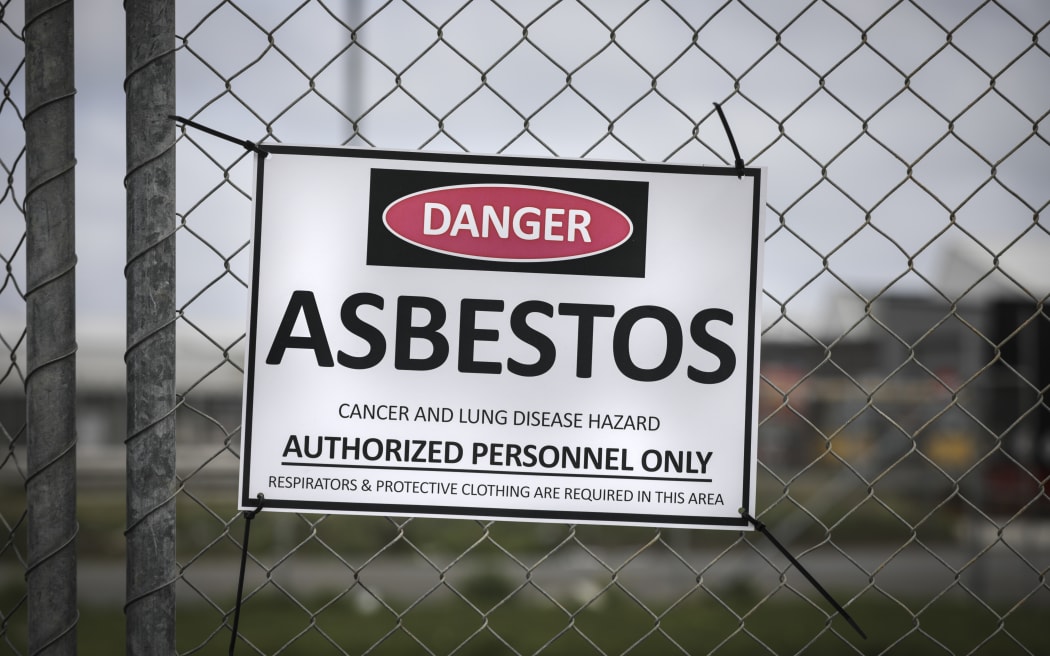School’s struggle with asbestos removal: ‘It’s destroyed me’

An Auckland school’s efforts to get rid of asbestos has been so tough its principal thought of quitting the job, while the builder contracted to do the demolition is worried about the threat to his business and health.
The Ministry of Education has said it is considering giving schools more help with the dangerous material, but has yet to make key moves.
Many schools were built using asbestos, and many of them such as Glenavon School are now struggling to be rid of it.
A simple renovation of eight classrooms turned complex at the 400-pupil school Blockhouse Bay in 2022 when asbestos – which experts claimed was not in the rooms – was found by demolition workers.
The Education Ministry told RNZ that Glenavon was an example of a school that hit problems, but won through.
Principal John Hunte has a different view.
“I can’t even express to you what kind of stress and pain personally it has been,” he said.
“It’s destroyed me, to be honest.”
The actual removal job of the asbestos went okay – the children’s safety was put first with daily air monitoring, Hunte said.
However, the surprise discovery has cascaded into problems, and the 90-day, half-million-dollar project is still going on, and may end up costing the taxpayer six times as much.
It also has main contractor Dedan Percy rueing the day he led the demolition there.
“I was personally exposed to the asbestos and my doctor has been informed of this,” he told RNZ.
“I am incredibly upset.”
As when any big project goes wrong, there have been recriminations and commercial fallout.
“I think it will be the death of my company, to be honest. It’s cost us financially close on to over a million dollars, that we are wearing,” Percy said.
The Education Ministry has admitted to a number of jobs going wrong, yet officials asserted that Glenavon was “ultimately able to resolve the issues appropriately”.
The new term started this week, with the children finally returning to the last four newly renovated classrooms, after Hunte had spent more than a year finding somewhere else for 120 pupils to learn.
“It’s definitely crossed my mind [quitting], waking up in the mornings, going: ‘Can I continue to do this for much longer?’, when the passion and excitement is around teaching and learning and see awesome opportunities for the kids,” he said.
He was still keeping the new bathrooms closed, saying they were not up to scratch.
“We’re still not free of it. It has missed every deadline and is still not finished.”
Hunte figured he had spent 75-80 percent of his time in the in the past six years managing property. “It’s ridiculous.”

School board chair Andy Crowe said they had tried their best, but were not experts when it came to property.
“We put a lot of trust in the process and the guidelines that support us to do our jobs well, and also trying to be a responsible employer,” Crowe said.
“The stress that it causes John has us thinking about how can we support him as best when there’s so many things juggling and sort of flying in the air.”
They had no choice but rely on the experts who told them there was no asbestos, Hunte and Crowe said.
They had handed over all the documents they had – including around the removal or encapsulation of asbestos in two of the rooms in the eight-room block – back in 2016.
Experienced Auckland firm Dowdell and Associates did the checks. Dowdell said in a short statement: “The June 2021 report states that no asbestos is present via the scope that was given for this survey.
“Further surveys and inspections have been completed satisfactory to the client since this report. [The firm] are not aware of any further issues and unable to comment further due to client confidentiality.”
Project managers Asset Project Facilitators said in a statement it must rely on the experts.
It has been arguing with Percy’s firm, Construct Interiors, about the time and money the project has taken.
Percy said he was supervising demolition when they found the asbestos in the walls, ceiling and flooring glue, in a friable dusty state.
“Once we disturbed the structure, whatever was sitting on the existing framing in the walls and in the ceiling was significant enough for us to be breathing it.”
WorkSafe was notified.
Percy said he contacted Worksafe’s exposure register, but the agency recently shut the register, saying the industry was getting better at tracking exposures.
Emails showed the alarm sounding between the school and the Ministry when the walls came off.
“Are you able to confirm if the work activity (wall lining removal) undertaken without testing has resulted in worker exposure and classroom contamination occurring?” said an email on 15 November 15.
Hunte said he evacuated the children within “five seconds”.
Under Tomorrow’s Schools, the school led the project so was responsible for solving the problems, and it must have its own asbestos management plan.
Under health and safety laws, the board carries a lot of the responsibility, yet it is the ministry that owns buildings and set up the entire system.
“None of the processes related to property and construction is designed by the school,” Crowe said. “You know, the board doesn’t sit around thinking about how we’re going to manage asbestos – we follow the MOE’s guidance on this.”
Hunte said they followed their asbestos management plan, but the job became just too big.
The ministry did step in, or “this project would have bankrupted the school” – but they needed more support, he said.
Is this the best the system can do? The second part of this story will look at that.
According to the news on Radio New Zealand




